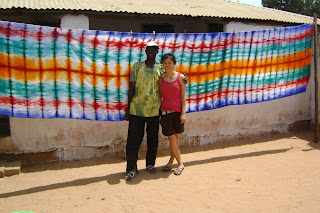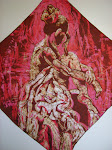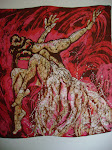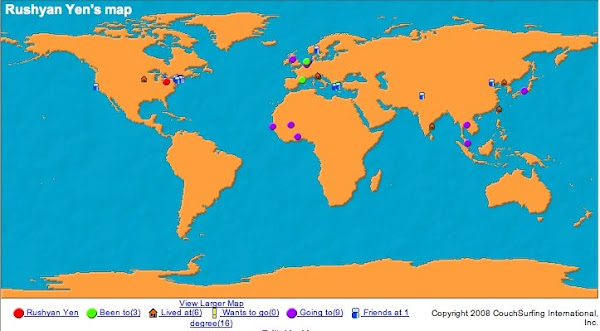Once I stepped off my high horse, I came to see just how much I could learn from the batik artists here in Gambia.
I learned:
How to build a fire and maintain a consistent temperature. The day I accomplished this with a single matchstick was one of the proudest days of my life and I felt as if I had just graduated from “life skills 101.”

How to dye fabric with as little water as possible - one jug maximum. When I think now of how much water I “wasted” in Indonesia and Japan, I almost feel faint!

Look for and gather natural beeswax from the wild.

Accept the many cracks that result from using cheap candlewax.

Recycle old wax from batiks to be used again.

Use African tjanting tools made of stick and wire and even how to make my own. I was actually amazed by how well they held the wax without all of the annoying drips of Indonesian tjantings.

Use wax crayons to draw my design first.

Make two batiks at once by folding the fabric in half first. More batiks, more money!
How to use tie-dye as a quick alternative to wax resist.

How to use the chemical Indanthren dyes from Germany which uses sodium hydrosulphite and caustic soda.

Basically, I learned how to make as many batiks with as little time an materials as possible. Most artists don’t see even try to make their designs unique but rather rely on a set of “patterns or templates” which they reuse over and over again. Unlike the UK, most artists here are men since most women are simply too busy in the field or taking care of their many children. Women do often help with the tie-dye however which is much easier and faster.
Most interesting of all are the “African wax print” batiks which are ubiquitous here. I wonder how many people know that they actually come straight from England and are a statement to the effects of colonialism. It is hard to imagine what Africa looked like before the arrival of these colorful and bright textiles.













1 comment:
Great update from The Gambia, Rushyan. I am fascinated by the tjanting tool made with a twig and string. Can you explain a little more about how it works? Does the hot wax "lodge" in the string and then flow down when you use it? Is the point in one of the tools shown made by shaping the stick first, or is it a nail?
Isabella
Post a Comment